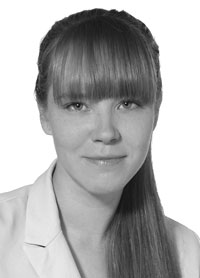Coordination skills to excell ski jumping technical skills
Ключевые слова:
ski jumping, coordination, simulation practices, flight phase, ski jumping technique.Аннотация
Objective of the study was to offer a new coordination skills test model for the modern ski jumping sport.
Methods and structure of the study. We made a theoretical analysis for the study knowing the modern ski jumping trampoline systems and based on our practical coaching service to the national ski jumping elite. We sampled for the coordination skills tests the 10-21-year-old male ski jumpers (n=124) qualified Junior Class athletes to Masters of Sport. The sample was tested by the following tests: static equilibrium rating test on an unstable T-shape balance plate fixed parallel or perpendicular to the wall to obtain the individual Sagittal Balance and Frontal Balance test data; and the following overall coordination skills rating tests with the spatial orientation test elements: figure-of-eight shuttle sprint test; and the specific low-limb coordination skills rating 10 hurdles jump test. The resulting test data were analyzed versus the ski jumping technique scores.
Results and conclusion. The coordination skills excellence practices were found highly beneficial for progress in the modern ski jumping sport trainings and competitions at every stage of an individual sports career. Competitive accomplishments in the modern ski jumping sport heavily depend on a harmonious progress in coordination skills, with a special priority in the coordination skills trainings given to the ski jumping practices on a few trampolines with different dimensions and profiles. Such trainings are known to develop high stress tolerance and solution-finding skills in practical ski jumping competitive settings.
Библиографические ссылки
Dveyrina O.A. Concept and programming of athlete's coordination in specific sports. PhD diss.: 13.00.04. St. Petersburg, 2020. 500p.
Zubarev Y.M., Shefer A.A. Coordination skills building process in training of skiers-jumpers and naval athletes. Tsarskoselskie chteniya. 2014. V. 2. No. XVIII. pp. 208-211.
Karpeev A.G. Long-term strategy of sports technical training based on age-related patterns of development of motor coordination. Uchenye zapiski, no. 4 (38). 2008. pp. 35-39.
Podgaets A.R., Rudakov R.N. Biomechanical problems of ski jumping. Russian Journal of Biomechanics. 2000. Vol. 4, no. 2. pp. 20-30.
Pronin S.B., Gladkikh T.V. Nature of influence of general coordination on athletes’ technical training. Uchenye zapiski universiteta im. P.F. Lesgafta. 2018. No. 6 (160). pp. 191-196.
Rybakova E.O., Shutova T.N., Vozisova M.A. Training model with body composition and physical fitness tests for 12-15 year-old ski jumpers. Teoriya i praktika fiz. kultury. 2020. No. 3. Pp. 57-60.
Khusnullina R.I. Effect of vestibular load on cardiovascular system and motor reactions of children and adolescents practicing ski jumping. PhD diss.: 03.00.13. Kazan. 2008. 139 p.
Shutova T.N., Ryibakova E.O. Characteristics of physical fitness and body composition of 9-11- and 12-15 year-old ski jumpers. Uchenye zapiski universiteta im. P.F. Lesgafta. 2020. No. 2 (180). pp. 465-469.

Дополнительные файлы
Опубликован
Версии
- 2022-01-03 (2)
- 2021-11-01 (1)
Как цитировать
Выпуск
Раздел
Лицензия

Это произведение доступно по лицензии Creative Commons «Attribution» («Атрибуция») 4.0 Всемирная.
